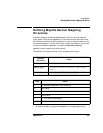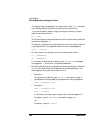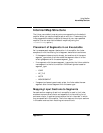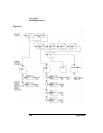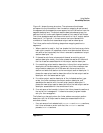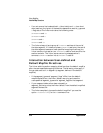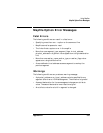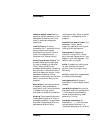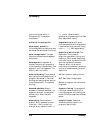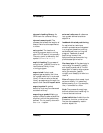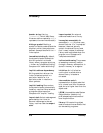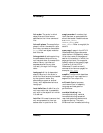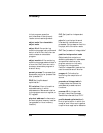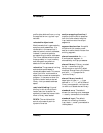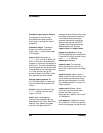
Glossary 315
Glossary
absolute object code Machine
code that contains absolute virtual
addresses. Created by the linker
when it combines relocatable
object files.
archive library A library,
created by the ar command, which
contains one or more object
modules. By convention, archive
library file names end with .a.
Compare with "shared library."
attaching a shared library The
process the dynamic loader goes
through of mapping the shared
library code and data into a
process's address space, relocating
any pointers in the shared library
data that depend on actual virtual
addresses, allocating the bss
segment, and binding routines and
data in the shared library to the
program.
basic block A contiguous section
of assembly code, produced by
compilation, that has no branches
in except at the top, and no
branches out except at the bottom.
binding The process the dynamic
loader goes through of filling in a
process's procedure linkage tables
and data linkage tables with the
addresses of shared library
routines and data. When a symbol
is bound, it is accessible to the
program.
breadth-first search order The
dependent library search
algorithm used when linking and
loading 64-bit applications.
bss segment A segment of
memory in which uninitialized
data is stored. Compare with "text
segment" and "data segment." For
details, refer to a.out(4).
buffer A temporary holding area
for data. Buffers are used to
perform input and output more
efficiently.
child A process that is spawned by
a process (a sub-process).
code generation A phase of
compilation in which object code is
created.
compilation phase A particular
step performed during compilation
— for example, pre-processing,
lexical analysis, parsing, code
generation, linking.
complete executable An
executable (a.out) file that does
not use shared libraries. It is
"complete" because all of its library



